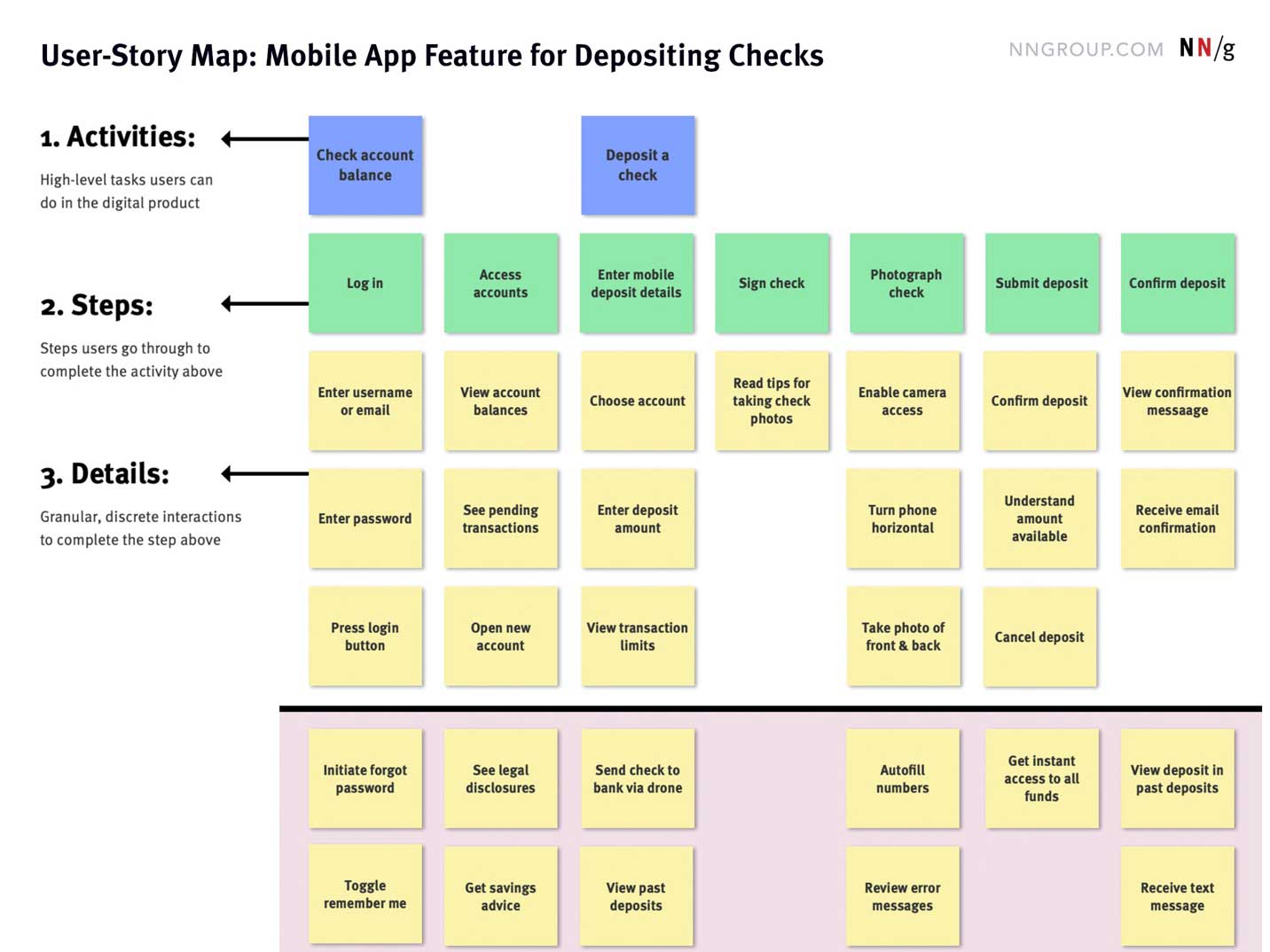Utilizing Story Mapping to Understand Your User For Improved Lead Generation

Image Courtesy – Agile
One of the first rules of generating leads is ensuring that your copy resonates with your ideal customer profile.
Miss the mark, and you will not attract leads or, perhaps worse; you bring in the wrong leads.
Businesses looking to generate more high-quality leads can unlock the power of story mapping for valuable user insights that power lead generation.
Understanding user behavior allows business to serve their needs in a way that suits them best. This leads to an improved consumer experience.
How do the business gather and use user insights from a story map?
The Importance of User Insights
Insights into product users offer feedback on how a product performs, so management can unearth issues and address them before they cause brand harm.
User insights also help improve products and in the development of new product lines. An intimate investigation of user behavior and requirements helps enhance services and products that outshine the competition.
Insights from the story map also help the business management know where the product or service needs refinement. Further, the insights into current users give a better view of the target audience, a critical tool for marketing customization to appeal to a specific niche.
How to Gather User Insights for Story Mapping
Interactions with users offer a deep look into what keeps them going. Here is how to gather customer insights to improve the user experience.
Reviews
Over 90% of users say online reviews influence their purchase decisions. This means there is a nine out of ten chance users will choose a product or service when it has reviews.
Not tracking reviews means a business is missing out on an enormous opportunity to sell its products and overlooking customer insights likely to damage its reputation.
Feedback Questionnaires
Can the management simply ask users what they think?
User feedback offers insights to help improve customer experience. Managers can draw up a picture of the user journey and find what areas are performing and others that require improvement.
Feedback questionnaires also offer an opportunity to respond to users and start a dialog to find out more and ensure issues are resolved.

User Sentiment Reviews
Sentiment reviews help business managers understand the overall feeling of the user base. Different sentiment review formats include emoji faces, star ratings, and “like and dislike” buttons. An alternative is a Net Promoter Score (NPS) system that asks users how they are likely to recommend the product.
A/B Testing
When deciding what features work best or where to place important elements, A/B testing is useful for collecting real-time user data. For example, when working out the version of a map, that is more appealing. A/B testing allows releasing both versions simultaneously, so some users use one version and others the second.
It becomes easy to determine which is most appealing using data on which story map returns the most conversions.
Social listening involves using tools to track key conversations relating to a brand. A business can track product names, industry-related keywords, brand mentions, and competitor tags to understand what users are talking about concerning their industry.
The process allows better customization of products to meet the trends. It also helps when businesses require quick information about their target niche.
How to Use Insights to Increase Leads
It is time to put the list of strong user insights from the story map into action. Updating the strategy with users in mind is an excellent way to bring new leads and build customer retention.
Here are examples of how best to use user insights to guide business decisions.
Inform Marketing Strategy
User insights help identify common traits among existing users. The prevailing trends can form the basis of the marketing strategy social media agencies can work with.
When businesses understand their current user needs, there is an increased chance of providing a stellar experience for new users from their first interaction with a brand.
Reshape Strategy
It is critical businesses are proactive instead of letting valuable knowledge about their user get left behind. After creating actionable insights, compile user personas based on the new knowledge.
Next, consider if the personas fit into the user map. If so, what can be done to improve their experience? If not, what changes should one make? Is it time to change the process, or can one change perceptions of the product?
Staying on top of user insights will help make continuous improvements to the business instead of scrambling to keep up.
Enhance Functionality
Figuring how customers use products and asking them for improvement ideas lets companies work out how to develop their offerings to do more. This is an excellent opportunity to usurp competitor offerings and appeal to a new audience while improving the user experience for customers on board.
Improved Customer Service
Over 90% of customer service teams agree users have higher expectations than before. Plus, users are more likely to share their experiences today than they were in the past.
This means that if a product is not meeting quality customer service expectations, there is a risk of added reputation damage from critical reviews. However, the same reviews are an excellent source of user insight to understand what issues need improving.
Optimize Offering Quality
When functionality is a critical product component, quality is about how well it performs. Speaking directly to users and monitoring reviews can help find out the quality of the products.
Are they efficient? Do they do what they are supposed to? Are they reliable?
User mapping insights are one of the first places to look at when considering making quality improvements.
Show Users You Care
Users have the power to choose businesses that treat them the best. Through the use of story mapping – product strategy can focus on user insights, prove the brand is highly customer-centric, and that it considers user needs instead of just its own.
Letting users guide the direction products take makes the user feel cared for, inspired to buy, and be loyal to a brand.
Sell more, understand your customers’ journey for free!
Sales and Marketing teams spend millions of dollars to bring visitors to your website. But do you track your customer’s journey? Do you know who buys and why?
Around 8% of your website traffic will sign up on your lead forms. What happens to the other 92% of your traffic? Can you identify your visiting accounts? Can you engage and retarget your qualified visitors even if they are not identified?


